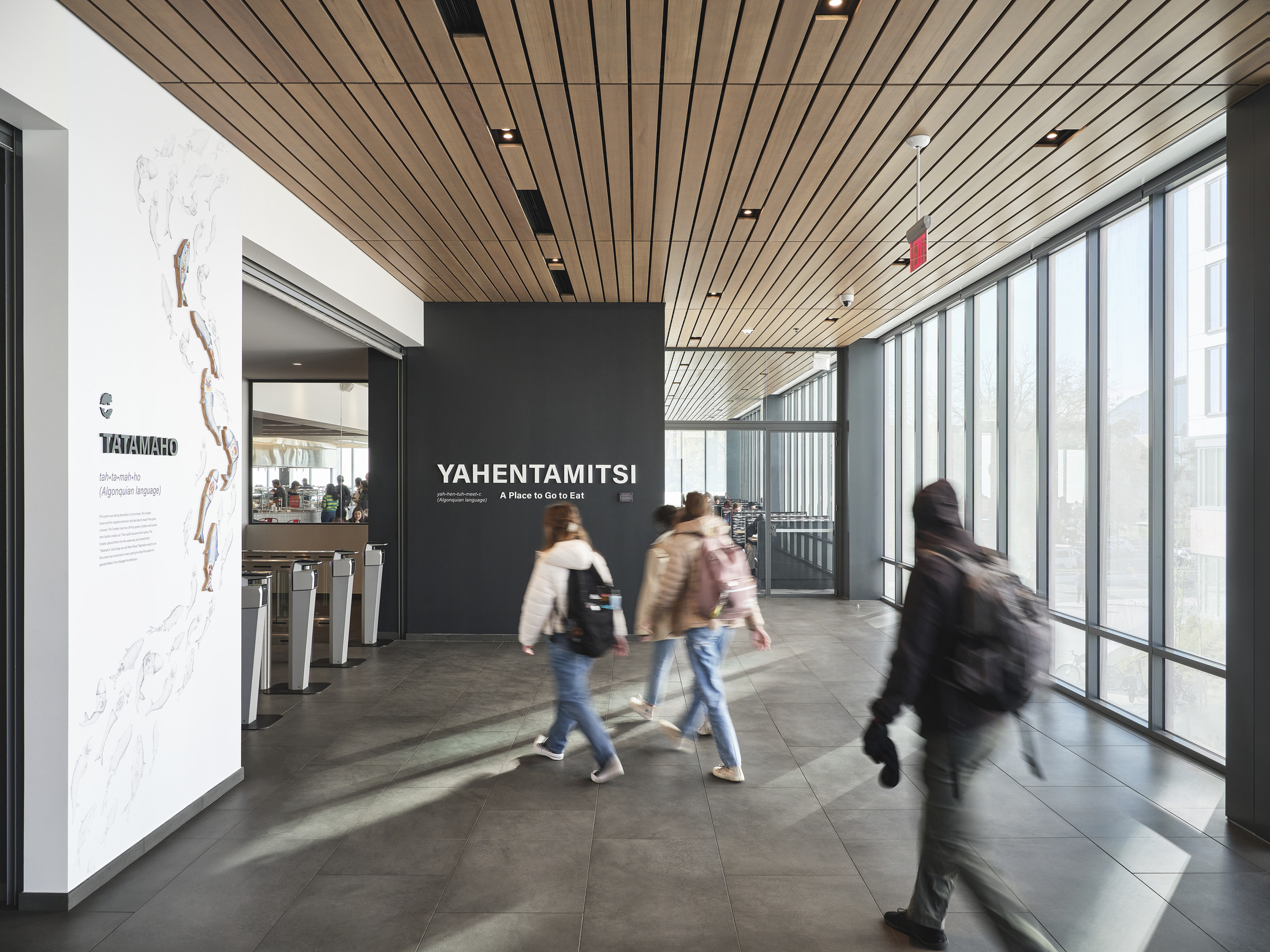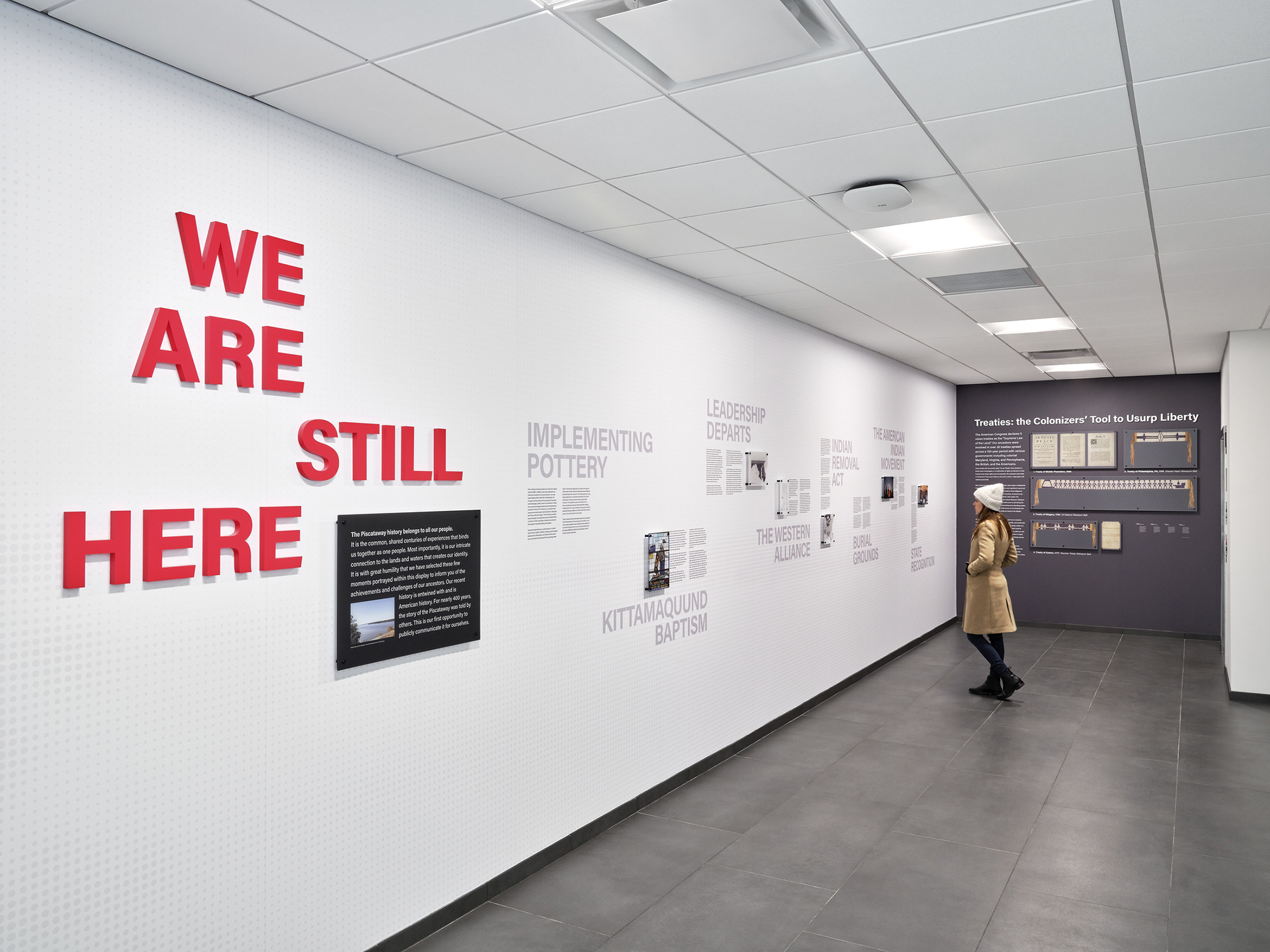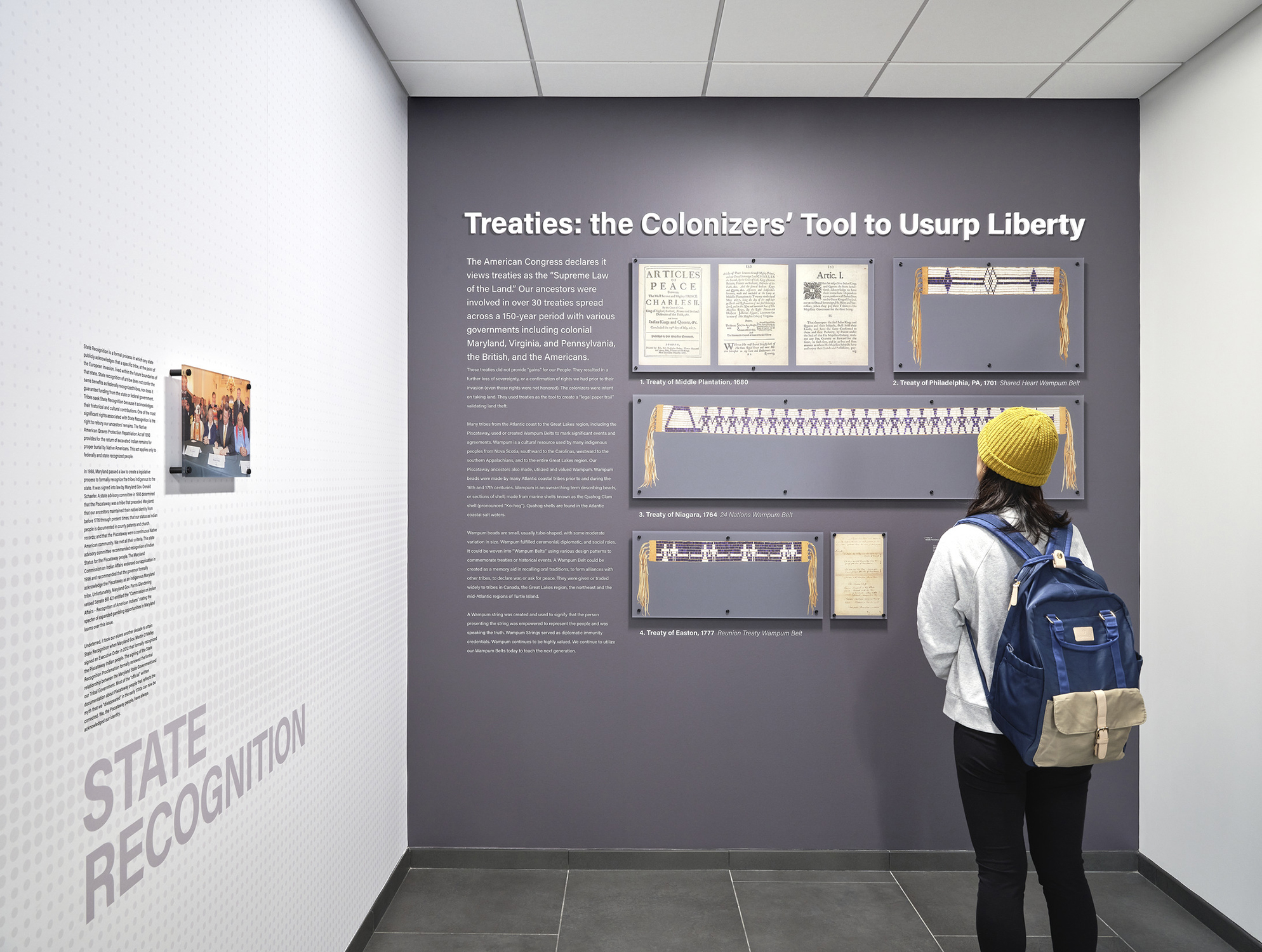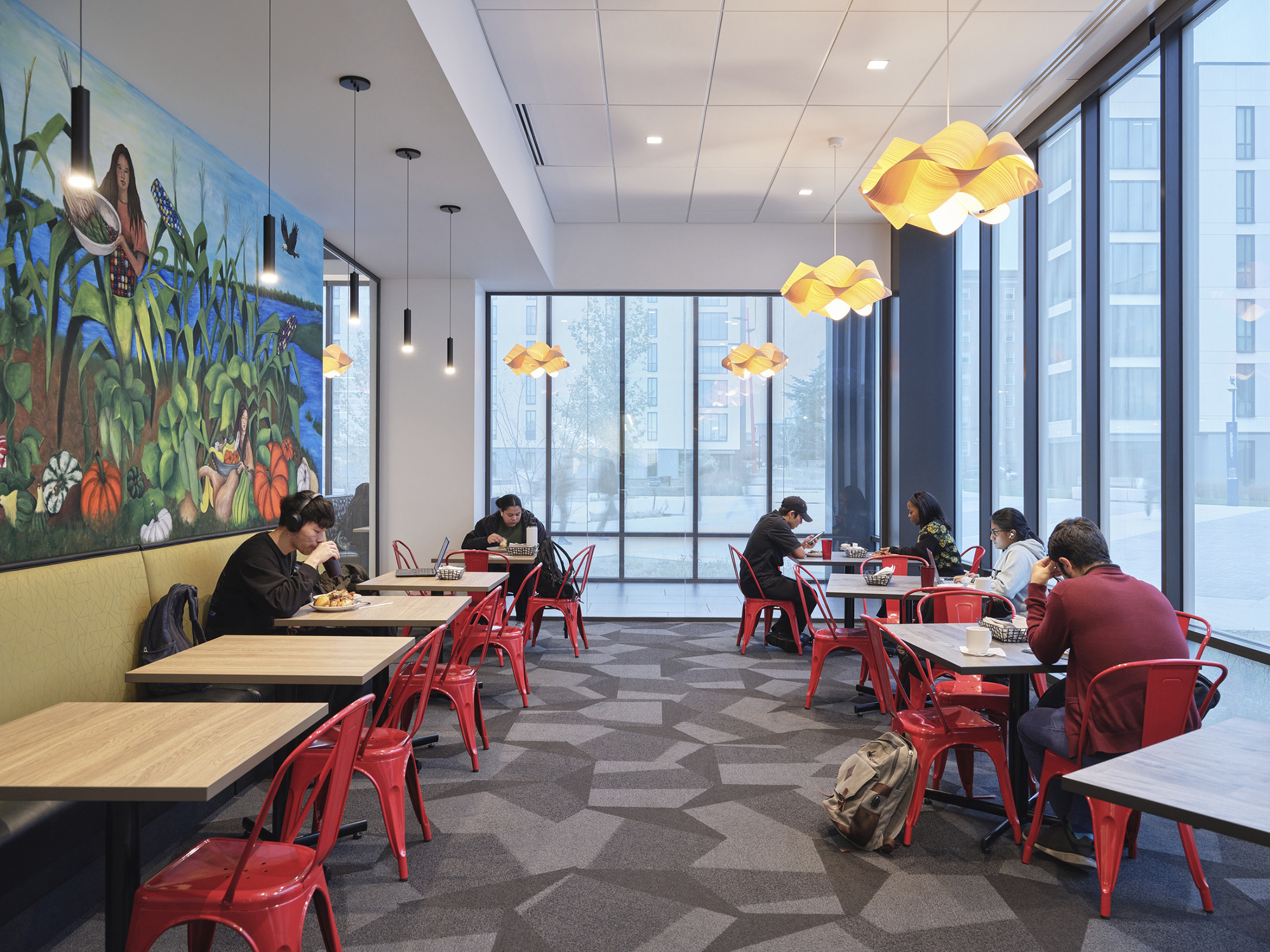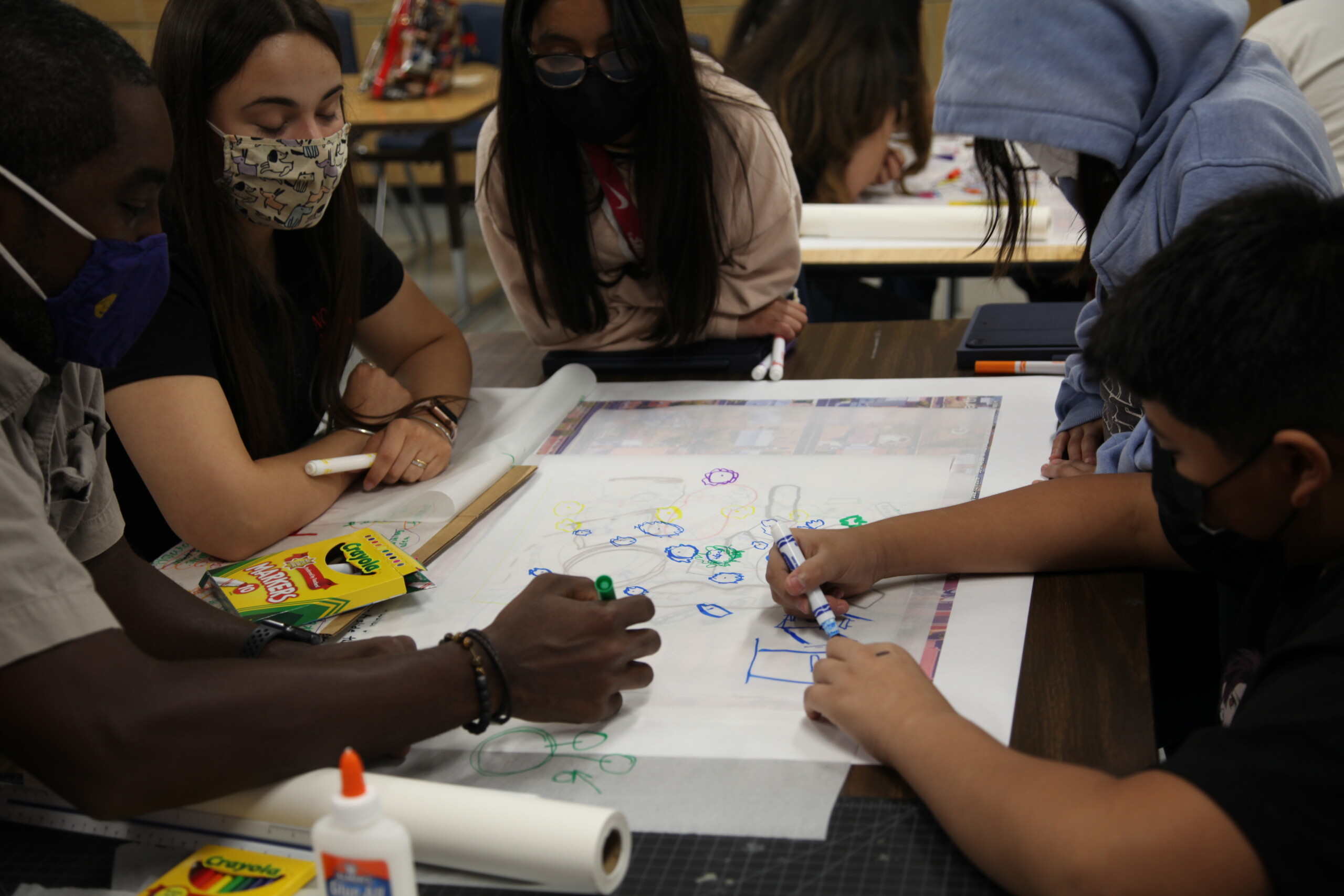Ayers Saint Gross worked with the University of Maryland to design a new residential village consisting of the Johnson-Whittle and Pyon-Chen Residence Halls and a new dining facility. The University of Maryland named their newly designed Yahentamitsi Dining Hall in recognition of the Piscataway Tribe, upon whose land the University of Maryland sits. “Yahentamitsi” translates to A Place to Go to Eat in the native Algonquian language.
Wanting the recognition to go beyond simply a name, the university worked with the Ayers Saint Gross design team to create immersive environmental graphics that would weave through the entire facility, offering a comprehensive history of the tribe, as well as bits of knowledge and tribal legends through authentic perspectives, voices, and artwork.
Our team worked closely with the university, as well as elders of the Piscataway Tribe throughout this iterative process to ensure an outcome of which everyone would be proud. It was an honor and privilege to learn from the Piscataway elders and to offer a canvas for their authentic stories to be told.
Throughout the design process, we focused on relationship-building between the university and tribal government. We listened and learned and learned some more. Our goal was for visitors to really learn who the Piscataway peoples are and reflect on their philosophies surrounding food and the natural world.
Some of the main messages we heard from the Piscataway peoples were about food as a shared gift that should be equitably distributed, and animal and plant relatives as individuals who should be honored in addition to human relatives. The elders expressed a desire to reclaim and share their robust culture and history.
The design begins with the entrance of the dining hall, where a map of local waterways locates the 16 tribes of the Piscataway and displays the trade routes the Piscataway peoples used for more than 13,000 years.
Next, visitors are met with the legend of the shad fish, featuring original artwork by an indigenous artist. Each wall incorporates the Algonquian language. Notably, all elements provided by our design team are displayed in black and white while elements contributed by the Piscataway are integrated proudly in full color.
Woven throughout the dining hall is information about gathering cycles and the Seven Grandfathers who the tribes believe were sent by the Creator to watch over them. A hand-painted mural commissioned by a local indigenous artist completes the experience, illustrating the story of the gathering cycles.
Additional tribal history is shown on the lower level of the building (also, the entrance of the Honors College), including a comprehensive timeline, leading up to current day. A feature of this area was envisioned as an immersive treaty wall. This particular portion of the project was a learning moment for our team, as our original design included a collection of written treaties.
After the tribe elders explained that treaties were written by colonizers and amounted to a series of broken promises, we proposed swapping imagery of written treaties with imagery of wampum belts. These intricately hand-beaded belts are symbols of historic moments in the Piscataway culture. This shift allowed this important piece of history to be told through Piscataway voices.
This project is a great example of how environmental design can raise public awareness in a meaningful way. It is also just the beginning of the ways the University of Maryland plans to recognize the Piscataway peoples. Dining Services has already incorporated meal options consistent with the food and gathering cycles of the Piscataway Tribe. The university is also continuing its collaborations with citizens of the Piscataway Tribe by offering a course in Piscataway history and culture, led by eight tribe members.
I’m proud to have been a part of this process and I’m excited to see other universities continue similar, important recognition efforts.
